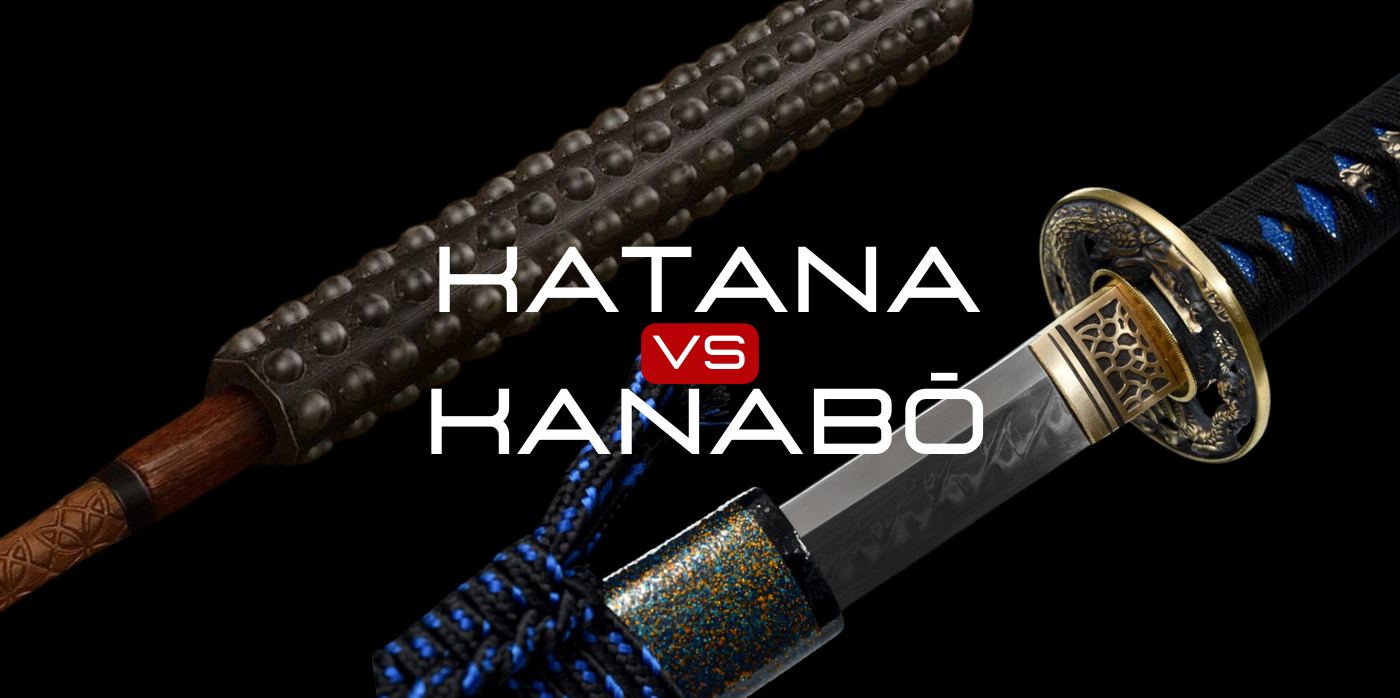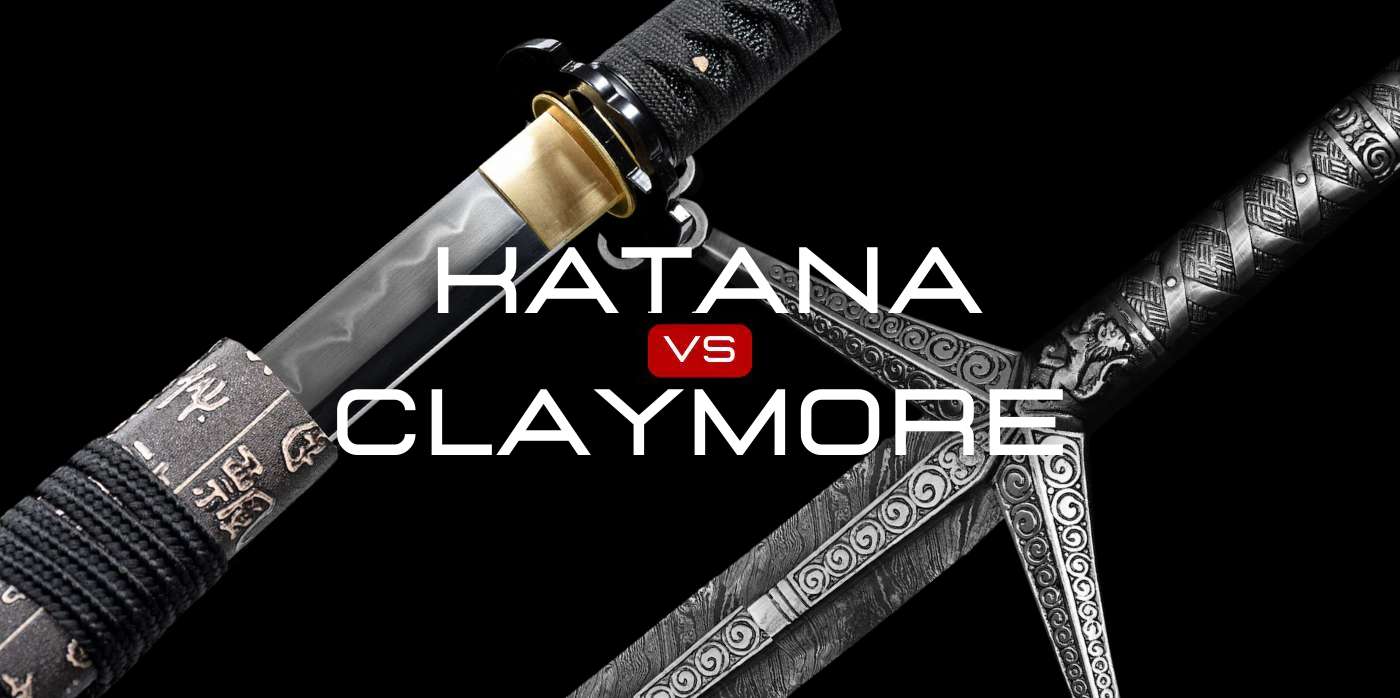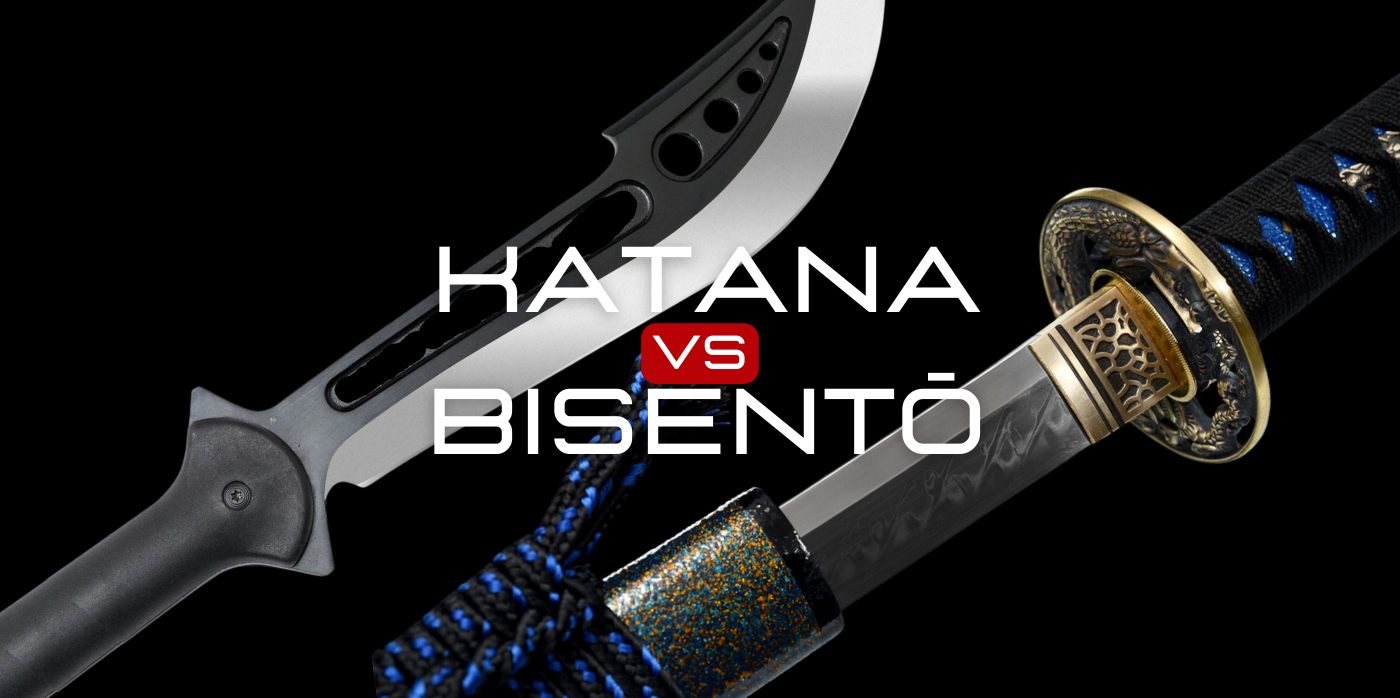What is a kanabo
A Kanabō (金棒) is a traditional Japanese weapon of feudal era. This formidable instrument is a large club, typically made of wood or iron, and is often reinforced with metal studs or spikes to enhance its destructive capabilities.
These weapons varied in shape and size, with the largest as tall as a man and the average around 55 inches in length. While primarily designed for two-handed use, there were also shorter, one-handed versions known as tetsubō or ararebō.

Wooden Kanabō
| Origin | Ancient Japan |
| Primary Use | Weapon in feudal warfare |
| Material | Iron, Heavy Wood (often reinforced with metal studs or bands) |
| Length | 4 to 6 feet |
| Weight | Ranged from 7 to 23 pounds (depending on materials) |
| Key Features | Spikes or studs on the head, heavy and durable construction |
| Historical Era | Prominent during the Sengoku period |
Use of the Kanabō in Feudal Warfare
The Kanabō's origins trace back to ancient Japan, where it evolved from simpler wooden clubs into the more elaborate and lethal versions seen in the Sengoku period. Initially designed for breaking through enemy armor and fortifications, the Kanabō's design was refined to maximize its destructive capabilities.
Breaking Through Enemy Lines
The Kanabō was primarily used to break through enemy lines during battles. Its weight and the spikes or studs on its head made it ideal for crushing armor and bones, allowing warriors to penetrate defensive formations with ease. This ability to create breaches in the enemy’s ranks was crucial during sieges and open-field battles.
Sieging Fortifications
In addition to its use against enemy soldiers, the Kanabō was also effective in sieging fortifications. Warriors wielded it to smash through wooden gates, walls, and other barriers. The weapon’s formidable impact could weaken structural defenses, making it easier for troops to infiltrate fortified positions.
Psychological Warfare
In the hands of a skilled warrior, the Kanabō was not just a weapon but a psychological tool of intimidation. Its sheer size and weight required immense strength to wield, making it a weapon of choice for the strongest samurai. The Kanabō could crush armor, shatter bones, and demolish wooden structures, making it indispensable during sieges and open combat.

Samurai with a kanabō
Is A Kanabo an effective weapon?
A kanabo can be an effective weapon due to its ability to deliver powerful blows capable of breaking bones and penetrating armor, making it a formidable tool in the hands of a skilled user. However, its heavy weight and the high level of skill required to wield it effectively limit its versatility and practicality compared to other weapons.
Kanabo VS Katana
The kanabō and the katana have significant differences in terms of design, use, and effectiveness. The kanabō is a heavy club, often made of wood and reinforced with metal spikes or bands. Its use relies on the ability to deliver powerful, blunt force strikes capable of breaking bones and denting armor. However, wielding it requires considerable strength and stamina, as well as a high level of skill. It is particularly effective against heavily armored opponents but is less versatile, slower, and more cumbersome compared to lighter weapons.
On the other hand, the katana is a curved, single-edged sword traditionally made of high-quality steel, such as tamahagane steel, making it relatively light and resistant. It is designed for precise cutting and slashing, and is also effective in thrusting attacks. While it also requires skill and training to master, it is generally more versatile in combat. The katana is fast, agile, and can be used in various combat scenarios, including close-quarters combat. However, it is less effective against heavily armored opponents compared to blunt force weapons like the kanabō.
Historically, the kanabō was used by samurai and warriors in feudal Japan, often against armored foes. The katana, on the other hand, became the iconic weapon of the samurai due to its balance of speed, precision, and lethality. In combat scenarios, the kanabō excels in situations where powerful, crushing blows are needed, while the katana is superior in fast-paced, versatile combat where precision and agility are crucial.

Kanabō VS Katana
How heavy was a Kanabo?
The weight of a kanabo varies, but they typically ranged from 7 to 23 pounds (3 to 10 kilograms). The exact weight depended on the length, thickness, and materials used, with some larger versions being even heavier.
Design and Construction
The kanabō was typically made from a combination of the following materials:
- Wood: The core or main body of the kanabō was usually made from a strong, dense wood such as oak or ironwood. This provided the necessary heft and durability for the weapon.
- Metal: The surface of the kanabō was often reinforced with metal spikes, studs, or bands. These metal elements increased the weapon's effectiveness by adding weight and the ability to penetrate armor.
- Iron: In some cases, the entire kanabō might be made of iron or steel, making it exceptionally heavy and durable but also more challenging to wield.
The Kanabō is designed for maximum impact. Its head is typically studded or spiked, which allows it to crush armor, bones, and fortifications.
The Kanabo in Japanese Mythology
In Japanese mythology, the kanabō is often associated with oni, which are mythical ogre or demon-like creatures. Oni are known for their immense strength, fearsome appearance, and malevolent nature, often depicted as large, hulking figures with horns, sharp teeth, and a fierce demeanor.
The kanabō is a symbol of brute strength and power, which fits well with the characteristics of the oni. The weapon is often shown as being wielded effortlessly by oni, emphasizing their supernatural strength and dominance.

Oni holding a kanabō
The image of an oni with a kanabō is iconic in Japanese culture, symbolizing an almost unstoppable force. The phrase "like giving a kanabō to an oni" (鬼に金棒, oni ni kanabō) is a common Japanese idiom. It means to make someone who is already strong even stronger, much like giving an already powerful oni a mighty weapon like the kanabō. This expression underscores the perceived invincibility of an oni with such a weapon.
Oni with kanabō often feature in traditional Japanese festivals, such as Setsubun, where people throw beans to drive away evil spirits. Costumed performers may dress as oni, carrying kanabō to add authenticity and drama to the festivities.





